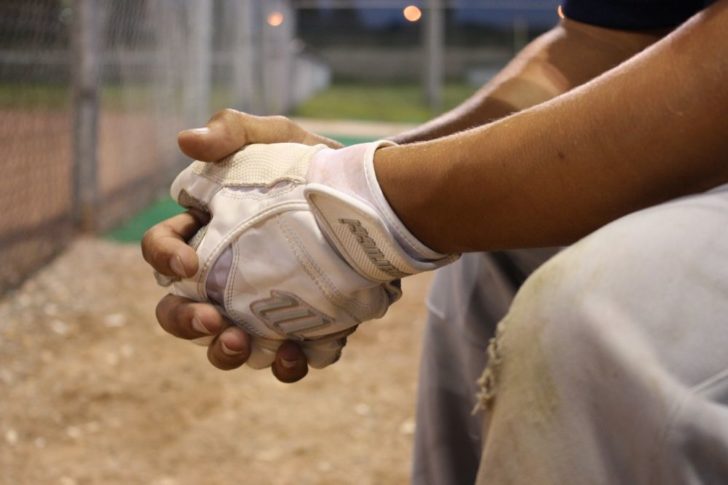Baseball Ball: A Comprehensive Overview

[Introduction]
The baseball ball is an essential component of the popular sport of baseball, serving as the nucleus of each play. This profound sphere is the catalyst for intense games and crucial moments. In this article, we will delve into the intricacies of the baseball ball, exploring its types, popularity, quantitative measurements, differences between various balls, and a historical analysis of their advantages and disadvantages.
[What is a Baseball Ball?]

A baseball ball is a small, round object that measures approximately 9 to 9.25 inches in circumference. It consists of a solid core made of cork or rubber, wrapped in layers of yarn and covered with genuine horsehide or synthetic materials. The ball’s construction ensures durability while maintaining a consistent weight, shape, and performance, making it ideal for the game of baseball.
[Types of Baseball Balls]
There are different types of baseball balls designed for various levels of play and specific game situations. One popular variant is the official Major League Baseball (MLB) ball used in professional games. This elite ball is meticulously crafted to meet strict specifications, ensuring fair play and optimizing the performance of athletes. Another type is the youth baseball ball, tailored for younger players with a softer core and a slightly smaller size. In addition, specialty balls, such as training balls with a reduced flight capability, are used for specific training purposes.
[Quantitative Measurements]
Several quantitative measurements are crucial when considering the performance of a baseball ball. One of the most important factors is the ball’s weight, typically ranging from 5 to 5.25 ounces. Furthermore, the ball’s coefficient of restitution, often referred to as its «bounciness,» affects how it reacts when struck by a bat. This coefficient is measured through a compression test, which determines the amount of energy the ball retains after being compressed. The spin rate, resulting from pitcher mechanics and ball grip, significantly influences the trajectory and movement of the ball. Additionally, the exit velocity, measured off the bat’s contact with the ball, determines the ball’s speed and potential distance.
[Differences Between Baseball Balls]
Different baseball balls exhibit distinctive characteristics that influence gameplay. For instance, the MLB ball has been a subject of analysis and controversy due to its reduced drag and higher seam height, resulting in increased home runs in recent years. On the other hand, youth baseball balls often have softer cores, ensuring player safety while learning the game. Specialty balls, like training balls, may have altered weights or reduced flight capabilities, aiding in skill development and specific training exercises.
[Historical Analysis of Baseball Balls]
Throughout the history of baseball, advancements in technology and design have led to various changes in baseball balls. Earlier balls had a rubber core, which was later replaced by cork due to its superior performance. The introduction of synthetic materials, such as polyurethane, revolutionized the durability and consistency of the ball. Different eras also saw adjustments in the size and weight of baseballs, influenced by factors like player safety and gameplay preferences. The evolution of baseball balls has sparked debates among players and experts regarding their advantages and disadvantages, with some claiming a shift in favor of offense or defense based on the ball’s characteristics.
[Insert Video Here]
To further enhance your understanding of baseball balls, we have prepared an informative video that showcases the intricate details of their construction, the manufacturing process, and the impact they have on the game.
[Conclusion]
In conclusion, the baseball ball is an integral part of America’s favorite pastime. Its construction, various types, quantitative measurements, differences between balls, and historical significance all contribute to the captivating nature of this remarkable sport. Understanding the intricacies of baseball balls enhances appreciation for the game while providing insights into its evolution. Next time you watch or play baseball, take a closer look at the ball that drives the action on the field.
FAQ
What is a baseball ball?
What are the different types of baseball balls?
How have baseball balls evolved over time?
Flere nyheter
Hydrafacial: Hvorfor bør man vurdere det som en del av sin hudpleierutine?
[Introduction] The baseball ball is an essential component of the popular sport of baseball, serving as the nucleus of each play. This profound sphere is the catalyst for intense games and crucial moments. In this article, we will delve into the intr...
08 juli 2025
Familierett: En veiledning gjennom juridiske prosesser
[Introduction] The baseball ball is an essential component of the popular sport of baseball, serving as the nucleus of each play. This profound sphere is the catalyst for intense games and crucial moments. In this article, we will delve into the intr...
06 juli 2025
Hva er ROS-analyse, og hvorfor er det viktig i planlegging og utbygging
[Introduction] The baseball ball is an essential component of the popular sport of baseball, serving as the nucleus of each play. This profound sphere is the catalyst for intense games and crucial moments. In this article, we will delve into the intr...
05 juli 2025
Kjøkkenvask: Oppgradere hjemmets hjerte
[Introduction] The baseball ball is an essential component of the popular sport of baseball, serving as the nucleus of each play. This profound sphere is the catalyst for intense games and crucial moments. In this article, we will delve into the intr...
05 juli 2025











